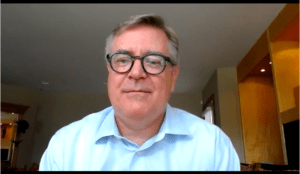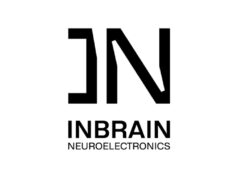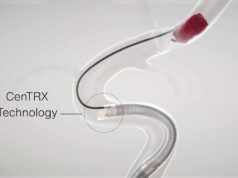 The pandemic has affected the lives of everyone across the world, but especially those in the medical field. Physician’s daily practices have changed, but the manufacturers of the medical products used every day have had to adapt, because a pandemic has not stopped the medical need for their products.
The pandemic has affected the lives of everyone across the world, but especially those in the medical field. Physician’s daily practices have changed, but the manufacturers of the medical products used every day have had to adapt, because a pandemic has not stopped the medical need for their products.
Mark Paul, Stryker’s current global president for neurovascular, started his career at Procter & Gamble. It wasn’t until he watched his wife’s C-section, and found himself completely fascinated by the surgery, and realised he had a passion for the medical world. Shortly after he made the move to Boston Scientific.
As a young sales rep in peripheral vascular he could not help but go and watch the first neurovascular cases in his area, which at the time included devices such as the Guglielmi detachable coil (GDC). He knew he was hooked. So when the position of product manager for the company’s neurovascular division became available, Paul claims he ran to the CEO’s office in excitement.
In 2011 Stryker bought Boston Scientific’s neurovascular section, and with it came Paul. During his career he has seen some massive developments in the neurovascular space, yet, he claims that they are, “just getting started.” With robotics and artificial intelligence (AI) now entering the space, it is his opinion that the next five to ten years are going to be extremely exciting in neurovascular.
This exciting space has had a spanner thrown into the works over the past ten months, but a global pandemic does not stop people from having strokes and does not stop the need for the best possible treatments.
For Paul, his team is important. He likes to bring together the smartest people and commune on ideas. But on the 10 March, Paul sent his team to work from home, stating that his number one priority was the safety of his team and their families. However, he had two other priorities: to continue supporting physicians around the world by ensuring products were still being made, sterilised and shipped; and continuing to innovate while working from home.
Stryker had to innovate from the factory up. Social distancing had to be built into the design of their facilities, with new Plexiglas dividers being added. They also were required to change the way they educated their clinicians on the use of their technology, adapting to a more digital form of communication. Paul commented, “the silver lining of COVID-19: it has forced us to challenge our paradigms and has allowed us to explore new and improved ways to provide physician support and training than we have ever had before.”
Paul goes a step further, by explaining that the experience of COVID-19 will likely change the industry in the long term by going forward with a blending of best practices.
Paul stated, “nothing is better than face to face communication, nothing is better than meeting face-to-face to talk about technologies and procedures and patient’s needs, and how to best treat those patient’s needs.” However, he claims that the pandemic has taught him that this is not always the best use of everyone’s time, and we don’t need to be sending people on airplanes as frequently as we had done.
Although practices have changed for Stryker, their core aims have remained the same. For Paul, the most important thing has been sticking to their mission: complete stroke care, to advance the treatment of those who are suffering from stroke.
Looking forward, for Paul there are a lot of areas where he can see growth and improvement. He states that, “the vast majority of stroke patients are not receiving treatment or receiving that treatment on time.” He would like to see improvements in the time in which patients are brought in, and patient education. Paul comments that while patients are on the procedure table, there is still room for improvement in devices and imaging. Finally, he claims post stroke care is an area with major opportunities for advancements, as they help patients recover from strokes.
As previously mentioned, the neurovascular field is becoming very exciting with the inclusion of new AI and robotics technologies, as Paul comments, “I think over the next several years you’re going to see exciting technologies that will dwarf what we’ve been launching today.”
However, none of this can happen without clinical trials, which Paul notes can take years and cost tens of millions to undertake. Yet Paul comments that it is, “the right thing to do for patient care.” He claims that their main aim is meeting physician needs, so they keep listening to their physician thoughts, watching their surgeries and looking at their outcomes. Stryker wants to keep a high clinical threshold, meaning the investment put into clinical trials is worthwhile.
Paul explains that in their past, Stryker were certainly the pioneers, coming out with the first coils, wires, catheters and balloons. However, these days they may not always be the first to market—due to an increasingly competitive field—which for him is a positive development. He points out that they have great competitors, which helps to drive up standards.
Paul comments that through his career so far they have, “gone from doing a handful of cases to being the standard of care.” Neurovascular medical development is an exciting place to be, and Paul is well placed to watch it happen, as he says, they are, “just getting started.”









